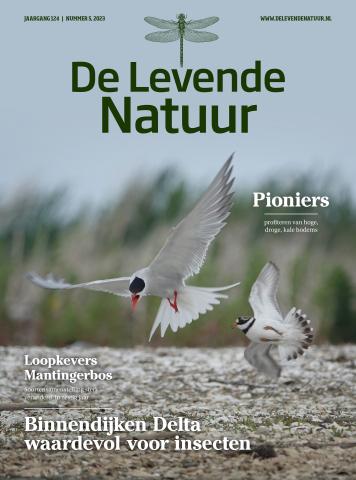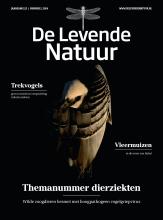De Levende Natuur nummer 5 van 2023 (English summary)
Afbeelding

Ground beetle recordings at Matingerbos have changed drastically in the past 60 years
We resampled the historic ground beetle recordings (1959- 1982) done at four locations in the Mantingerbos complex in the Dutch province of Drenthe in 2019 and 2020, using the same method (square metal pitfall traps with a perimeter of 1 m) to study changes in the ground beetle community over the past 60 years.
We found 10 % fewer species per location per year (p = 0.06), but no significant decline in the number of individuals caught. looking at habitat specific groups, we found a significant decline of the number of typical forest species (-30 %), heathland species (-25 %), and hygrophilous species (-39 %), but an increase in the number of ruderal species (+80 %). These changes may be explained by the conversion of heathlands into agricultural areas in the direct surrounding of the forest, drainage, and the general isolation of the forest. Our results show that also in an apparently unchanged nature reserve, where the numbers of individuals and species appear relatively stable, large changes in the fauna can occur.
Bare, dry soils stimulate pioneer bird population
Several Red List bird species nest on bare pioneer soils. Such habitats are very difficult to maintain as vegetation rapidly covers it. This is especially a problem in fresh water environments as in marine habitats, irregular salt flooding can slow down vegetation growth. For many years, managers tried several substrates and soils treatments to slow down vegetation growth. This is however badly documented and results are either anecdotic or not well shared. We investigated many of these try-outs and based on the findings, started a field experiment. On a small island we have created a sample site with different substrates, half of these plots with a root cloth and a 1 cm salt layer. We tested vegetation growth three years without mowing or other management. Part of the plots flooded during storms or were moist most of the year. These plots were overgrown quick and with dense high herbs. Dryer substrates maintained open soil better as especially perennial wall-rocket initially has a sparse distribution. There is hardly any difference in vegetation growth between substrates or soils with root cloth as such. Common terns nested on all substrates without an obvious preference. We advise to add salt only after three years and not on the pristine soils and use dry coarse substrates. In the next phase we will study the impact of removing vegetation during winter.
Insect richness on dikes
In 2020 and 2021 we conducted fieldwork on the entomofauna of 51 dikes in the southwest of The Netherlands. We found large densities of bees, butterflies and grasshoppers, as well as a wide variety of species. Overall, the typical fauna consists of thermophilic species with a preference for chalky grasslands. In addition, ground nesting bees were host to insects of different brood parasitic families such as bee flies, oil beetles and cuckoo wasps. Solitary bees and grassland butterflies can occur in far higher densities on dikes than adjacent seminatural habitats. However, the insect richness on dikes mainly depends on an extensive form of usage, which in many cases is not present.


